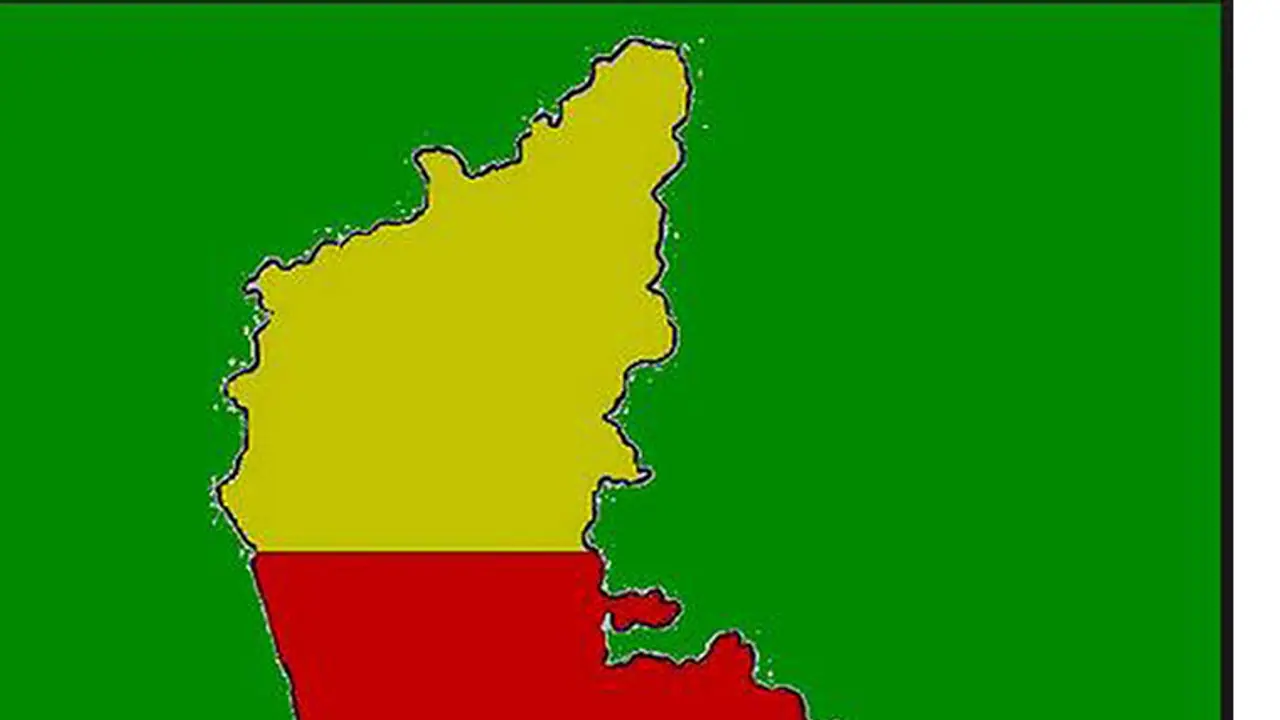This year since the Siddaramaiah government has made the move to get official status to the State flag spirits are soaring highIf regionalism is forgotten we cannot imbibe nationalism too. Pride in one’s language, state and culture should be nurture
Another Rajyotsava and another bout of Kannada celebrations. November is the month of yellow and red. This year since the Siddaramaiah government has made the move to get official status to the State flag spirits are soaring high. This is despite the fact that the struggle to implement Kannada in education, administration and our day to day life, like in Namma Metro for instance, is not against “outsiders” but against our own people.

The State Government made it mandatory to teach Kannada either as first language or as second language from first standard, which is similar to language rules in most of the states, but here the private schools are up against the rule, even contemplating going to court to abolish the rule. If students in Delhi can study Hindi or Tamil in Tamil Nadu or Telugu in Andhra or Malayalam in Kerala as first or second language why not Kannada in Karnataka?
The Kannada Development Authority Chairman, Prof S G Siddaramaiah is attempting to “convince” the educational institutions that kicking out Kannada and bringing in only English will eventually result in destroying the diversity and multiple culture and usher in monoculture. One nation one language one religion is a dangerous ideology.
It is for this reason that we need to celebrate the Rajyotsava in all its glory to remind people that the Kannada identity is of at most significance in these times of globalisation. If regionalism is forgotten we cannot imbibe nationalism too. Pride in one’s language, state and culture is something that should be nurtured. When that is under threat it is time to get active.
The pro-Kannada outfits have definitely indulged in some excesses but it was necessary at times. Just like Marathi would have vanished if not for Shiva Sena, some extent of language activism is necessary. Activism without malice that is.
The Kannada techies sporting T shirts with Kannada slogans – Ganchali Bidi Kannada mataadi – the whatsapp groups that teach one word a day to non-Kannada speakers, the Japanese who sings Kannada songs in the City, the Nepali who speaks fluent Kannada – are all lessons in themselves that learning the local language is not an impossible task.
In contrast some of the foreign nationals, for instance Nigerians and the “outsiders” meaning north Indians, who refuse to learn the language despite straying in the State for decades cause unnecessary friction regarding language.
Take for instance Namma Metro. If the simple three-language principle were to be adopted in the beginning itself there would not have been so much hostile exchange. Only after the Chief Minister intervened did the BMRCL agreed to include Kannada in the name boards which actually should have been the primary concern as Metro runs only in the City and does not go anywhere else.
What makes a Kannadiga feel alien in his or her own land? What scares us? Is it the English language or is it the life style? Instances of speaking in Kannada at Malls or any upmarket locations being sniggered at can be quite infuriating. If a common man goes to any mall and wants to buy something – i.e. spend his huge money – and the shop keeper telling him “Hindi me baath karo” is the stupidest thing any trader can advise. The any number of Marwadis in the City thrived only because the quickly learnt the language of the locals. They also became a part of the local community by getting involved in the cultural and social activities. Now nobody treat them as outsiders. It is an example to follow.
What does Rajyotsava mean to the non-Kannadigas in the City?
Do they take interest to know the history of the State? The Kannada speaking regions were spread over different regions prior to independence. The Old Mysuru kingdom, the Hyderabad Karnataka under the Nizam’s rule, the Bombay region under the Maratha rule and a bit of Kasaragod that eventually went to Kerala, all these had to come together to form one united Karnataka. Akhanda Karnataka as we call it.
It was not an easy task. It had loads of political and cultural implications and it was a tough task. There were great personalities like Alur Venkatarao and others who fought for the integration of Kannada speaking regions. To get that Kannada identity was a struggle. Rajyotsava for Kannadigas is time to pay tribute to its past. The non-Kannadiga should know and respect that sentiments.
Happy Rajyotsava.
* Prathibha Nandakumar is a popular Kannada poet, writer and journalist
